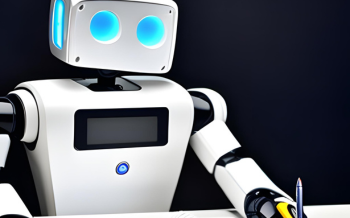How Do AI Detectors Work? Human vs AI

What are Ai detectors?
AI detectors, such as detecting-ai.com also known as AI writing detectors or AI content detectors, are tools designed to identify when a text has been partially or completely generated by AI tools like ChatGPT. These detectors are used to detect if a piece of writing was likely created by AI. They are helpful for educators who want to make sure their students are writing their own work and for moderators who want to remove fake reviews and spam.
However, these tools are still new and experimental, and they are not always completely reliable at this stage. It's challenging to determine with certainty if a text was generated by AI or a human. People are continuously improving AI models, making it harder to distinguish between AI-generated content and content created by humans. As AI technology advances, it opens up more possibilities for automated writing and text analysis.
How do AI detectors work?
Perplexity
Perplexity is a measure of how unpredictable a text is and how likely it is to confuse or perplex the average reader. AI language models strive to produce texts with low perplexity, which means they are more likely to make sense, read smoothly, and be predictable. On the other hand, human writing tends to have higher perplexity due to more creative language choices and occasional typos.
Language models work by predicting the most appropriate word to follow in a sentence and inserting it accordingly. By analyzing perplexity, AI detectors can assess whether a text is likely to be AI-generated. Lower perplexity scores provide evidence that a text is AI-generated.
Perplexity levels
| Example continuation | Perplexity |
|---|---|
| I went to the park and played with my dog. | Low: Probably the most likely continuation |
| I went to the park and played with my unicorn. | Low to medium: Less likely, as unicorns are not typically found in parks |
| I went to the park and played with my friend's younger sister's new puppy, who was really excited to see me. | Medium: The sentence is coherent but quite detailed and lengthy |
| I went to the park and played with my spaceship. | High: Does not make sense in the context and is illogical |
Burstiness
Burstiness, on the other hand, is a measure of variation in sentence structure and length at the sentence level. It is similar to perplexity but focuses on sentences rather than individual words. A text with little variation in sentence structure and length has low burstiness, while a text with greater variation has high burstiness.
AI-generated text tends to be less "bursty" than human text. Language models predict the most probable word to come next, resulting in sentences of average length and conventional structures. This can make AI writing seem monotonous at times. Low burstiness indicates that a text is likely to be AI-generated.
When working with AI-generated text, it's important to consider the concept of temperature. Temperature probability measures the randomness of predictions. A low temperature means the model will likely produce the most correct but potentially boring text with less variation. On the other hand, a high temperature leads to more diverse text but increases the chances of grammar mistakes or nonsensical output.
Who can benefit from AI detectors?
AI detectors are meant for anyone who wishes to see if a piece of text was created by AI. Users who may be interested include:
- Educators (teachers and university professors) who aim to ensure that their students' work is not written by AI
- Publishers that wish to ensure that only human-written information is published
- Moderators on social media and those against automated disinformation who seek to identify AI-generated spam and fake news
- Web content writers who want to publish AI-generated material but are afraid that identifying it as AI writing may cause it to rank worse in search engines.
- Recruiters who wish to confirm that their candidates' cover letters are original work.
AI Video and Image detectors
AI picture and video generators like DALL-E, Midjourney, and Synthesia are becoming more popular, and it's becoming increasingly critical to be able to recognize AI images and videos (also known as "deepfakes") to prevent them from being used to propagate disinformation.
Because of the technology's present limits, there are certain clear giveaways in many AI-generated photos and videos: anatomical abnormalities, such as hands with too many fingers; unnatural motions; the inclusion of incomprehensible text; and unconvincing expressions.
However, when AI pictures and videos get more powerful, they may become increasingly difficult to identify manually. AI image detector is a example of AI image detector.